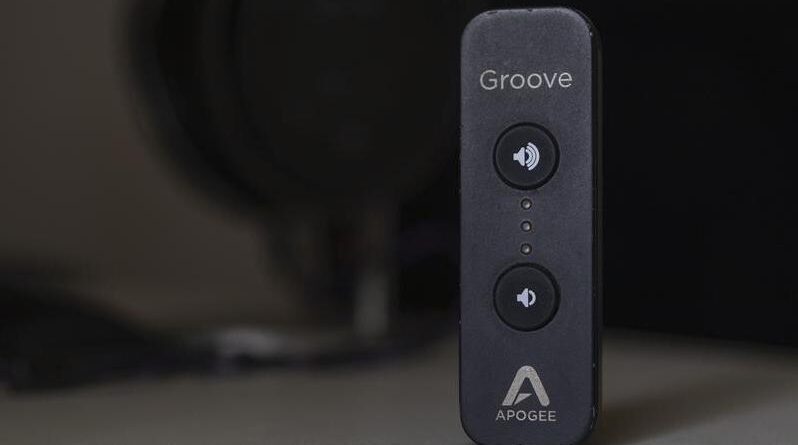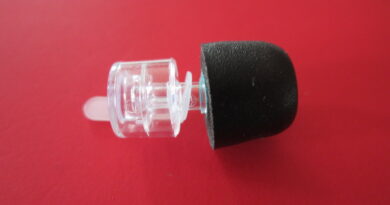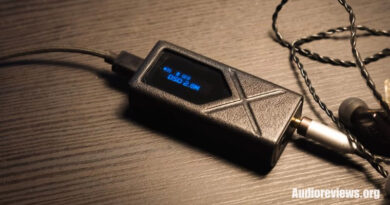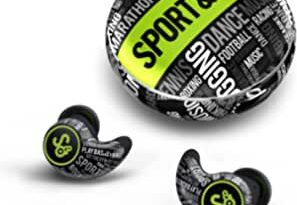Apogee Groove Review – Changing The Budget Game For Good (since 2015)
All of us, I guess, have milestone events, persons, things in our life: situations, people or stuff that, once “happened”, identify a “before” and an “after”. Apogee Groove is such, relative to my audiophile hobby.
Not only in absolute terms – it is nothing short of an absolutely out-dash-standing device – but in relative ones too: it taught me personally so much for such a low price and effort that even when I outgrow it I will forever stay in debt of a smile and a hug.
And times for back-condescending reminiscence are not even on the horizon at the moment. For the simple reason that I reckon it will take quite some more time for me to have the budget – which I would assess in approximately 1K€ – to invest in a real stack upgrade, vs yet another step in the sidegrade carousel which is what Groove teleported me out of really.
A quick TOC before we start, for those who wouldn’t bother reading “all” my bla-bla (yeah, you’re forgiven):
In this Article
What’s that?
Apogee Groove is a USB DAC-AMP device.
I’m pretty sure a wide portion of the budget audiophile community have never heard about this, in spite of it being on the market since 2015. Chances are many have never heard of Apogee Electronics Corp. in the first place, indeed.
Apogee is a US-based professional audio equipment designer and manufacturer in business since 1985. They earned their glory (and money) from audio professionals thanks to their patents and products: initially analog filters which would retrofit Sony and other high-end analog devices significantly upgrading their quality, later followed by breakthrough-innovative Digital Audio interfaces. Their target market is musicians, producers, and sound engineers – it’s therefore quite normal their brand is totally off the usual chifi marketing hype circus.
Groove is Apogee’s “entry level” portable DAC-AMP aimed at providing audio pros with an easy-going tool they can carry with them and plug onto their laptops while on the go, delivering a quality which needs to be in-line with Apogee’s higher-end equiment the same customer is supposed to regularly use in their studio. E.g. Apogee Symphony, to name something.
I’m not here for marketing but I find this storytelling video from Apogee’s web site explains superclearly what their intendend positioning is about Groove. (TL;DW: “[Dad, an affirmed musician,] is listening to super-high quality stuff all day every day […] so I bring the Groove, plug it into the laptop, and it feels and sounds as if it was in the studio”)
Getting closer to the actual device: no internal battery, Apogee Groove needs to be connected to a USB host (a PC for example) to even turn on. The USB channel is its only input – both for power and digital data.
“Cmon, cut it. It’s just a dongle!”
Yes and no. Structurally it’s a dongle yes. But it’s bigger, heavier and most of all it absorbs 340mA from the host, which is a lot. It’s therefore technically possible but practically unviable to use a phone, or a tablet, or even a lower end DAP as an easy host / transport. For on-the-go usage a Laptop is reasonably required, or some DIY creativity with a nice battery bank and a tool like iFi iDefender+. But let’s not deviate – for the sake of this article let’s say this is a “hi-power demanding dongle”.
It’s got a single output: 3.5mm single ended phone out. It supports PCM up to 24 bit / 192 KHz, and does not support DSD, nor MQA. Specifications are available here. Some numbers might seem odd at first glance.
“LOL! No MQA, no balanced output. My dongle’s specs are 3 times better, and I can use it for hours on my phone !…”
… Keep reading 😉
As a DAC: just phenomenal
Die-hard measurement freaks may want to take a look here. No, it’s no ASR.
The reconstruction filter is very good, but by far the most important of all those graphs is the frequency response one, which is wonderfuly linear well into the 60KHz range, and that’s why when playing FLACs sampled at 96KHz Apogee Groove delivers clarity and space reconstruction audibly even superior to what it delivers from 44.1KHz data – where performance is nonetheless already a full pair of steps above the usual budget suspects.
Compared to Groove, some other systems (often coming with the not too secondary “feature” of a 10X price tag…) may arguably be even more precisely optimised for 44.1KHz data, but their response drops dramatically rapidly immediately after 20KHz (e.g., Hugo).
Enough graphs. Let’s audition.
Starting from the most evident part: Apogee Groove draws on space in a totally stunning way. Yes, already at 44.1KHz – and even more mesmerisingly at higher sampling rates.
Never heard something like that before, and I yet have to hear anything really similar let alone better. Spatial reconstruction is nothing less than phenomenal out of the box, and that, and imaging, are easily better than what I can hear from Chord Mojo, iFi nano iDSD BL, iFi Micro iDSD Signature, as well as Questyle QP1R, Lotoo Paw 6000 and Gold Touch – when considering their DAC performances. Groove is really one class above. At least one.
Apogee Groove’s DAC also delivers high end detail, texture, openness and intonation. All other DACs I heard as of yet barred none offer a paler representation of instrument textures. Some may have a blacker background (e.g. Micro iDSD Sig), or can offer higher sharpness on high end details (e.g. Mojo), but most if not all the alternatives I heard are fundamentally duller (in comparison) and/or smear on detail and/or miss out on that unique, incredibly well calibrated “suspense factor” Groove puts in transients.
Summarising: Apogee Groove delivers a totally unique dimensional feel to the sonic images. It’s technical, but musical. Controlled, but emotional.
Compared to mid-tier competition Apogee Groove’s DAC wins easy, and big. By just casually plugging it in and listening the difference it totally obvious.
Its DAC tuning quality taken per se is actually at an even higher level than its price would suggest when compared to professional tier alternatives, but in that case Apogee Groove’s small physical size starts to represent an issue as it makes it technically impossible to pack high level of power filtering inside, or a separate, cleaner powering line, like it can be found on superior systems (Holo May, Schiit Yggdrasil…).
The little kid can be belped a bit though, and per my experience it’s big time worth doing it, as its performances furtherly improve and significantly so:
- privilege a Linux distro + a technical, lightweight music player, or an Android box + UAPP, over a generic Windows or Mac system;
- filter out and/or divert the VBUS power line into a cleaner source;
- manage grounding issues and rebalance DC;
- reclock / regen the USB signal;
- etc
On my #1 desktop stack Apogee Groove is USB-connected to the laptop host and powered via an iFi Nano iUSB3.0 (my take on that here) + an Uptone USPCB. The difference vs plugging directly onto the host is totally evident: voicing is furtherly open, detailed, imaged. I’ll soon finalise my switch from the laptop onto a Linux based box to furtherly improve the upstream quality (iUSB3 is a nice filter, but it’s always better having less dirt to filter out in the first place isn’t it).
Surely, additional infrastructural elements as a better PS, some competent USB reclocker etc will add to the total cost. Again, if the comparison reference is mainstream chifi DAC or DAC-AMP none of that is needed: Apogee Groove will run circles around those “as-is”. Integrating Apogee Groove with additional infrastructural elements serves the purpose of making it “clinge to” much upper-tier (i.e. way more expensive alternatives).
As an AMP: here’s where it gets tricky
First time I plugged my E4000 into Groove I had a sort of jaw-dropping reaction. That was unlike any other source I ever tried. Most of this was surely coming from Groove’s DAC capacities, but how much did the AMP part contribute on that?
What I did was of course trying to plug all amps I had, or I could get (on loaner for reviews, from friends… I won’t make a list here) downstream and try and find differences. Basically: not a single sub 200$ amplifier I tried on there made Groove’s native output into E4000 better. Most of them (as a matter of facts: all of them except just one) reduced dynamics, made stage smaller or flatter, or compressed the range – read: they are less clean.
My amp sensei taught me that “amps don’t add to dacs – they can only take away, if they are not clean enough”.
The key amp job is leaving a DAC’s voice unmodified while properly feeding the load the odd way it sometimes requires – otherwise it will be the load i.e. the headphone/IEM to ruin the DAC’s work in its turn.
My first E4000-based test was simply telling me that Groove’s built-in amp stage is (sometimes dramatically) cleaner than all external amps I have at hand, while at the same time capable enough to optimally bias its transducers.
Why did this happen? And will this be “always” the case?
Apogee Groove’s amp stage uses a current gain IC in its main circuit and according to Apogee the whole amp shapes the current waveform, aiming at keeping that stable, unlike what traditional amps do, which is shaping the voltage waveform instead.
For one hand, shaping current is the most logical choice when it comes to an audio amplifier, as current (not voltage) is what “generates” the sound (“That’s the Lorentz force, baby!”).
“So wait: why not all amps are built on this concept then?”
Because in general such technology will suffer with wild frequency response changes in conjunction with impedance changes on headphones (should you not know, impedance inside your headphone or IEM is, in general, far from stable – planar drivers are the exception).
So alternatively amp designers typically use voltage shaping technologies. Once voltage is applied to resistance/impedance it will create current. Which will drive the transducers (i.e. the little loudspeakers inside your cans or iems). Problem solved. Or not?
Ehm… not really. Sure: once voltage is applied to a load current is generated but such resulting current will not be precisely “in sync” with the voltage fluctuations prompted by the amp. And since the transducers inside the headphones will vibrate and produce sound following such current, the sound they’ll generate will have slight (but decisive) temporal variations compared to the “intentions” (i.e. the incoming analog signal, expressed in terms of voltage variations).
Translated in practice, this means music will have… distorted imaging! That can be corrected of course, but it takes further circuitry, so more money. This is why “budget” voltage-shaping amps are… well… imperfect (and I’m being kind here). And part of the reasons why it takes a pretty penny to make a seriously good amp.
Oppositely, Apogee Groove implements a current shaping topology, and to cope with its structural limitations Apogee added a compensation circuit that overcomes the induced FR changes.
They call it Constant Current Drivetm technology, and – to paraphrase Steve Jobs – “boy did they patent it !”. They are not even keen on talking or explaining its details – it’s indeed “not so clear” how exactly Apogee Groove does what it actually does.
Be as it may, Groove’s output promises to sound very coherent in virtually all supported situations, no matter how “restless” the load impedance is.
Another quite surprising feature is Apogee Groove’s uncommonly high output impedance: 20 Ohm.
Such is welcome of course when plugging high impedance cans, while it is in general a serious hurdle when pairing lower impedance earphones or IEMs, which would “sound bad” in such situation. Groove offers you to forget the “8X impedance rule”.
Simply put, for best good results it’s required recommended that your headphone’s impedance is at least 8 times bigger than your amp’s output impedance. Or equivalently said: to properly drive a headphone/earphone with a certain impedance call it Z, your amp’s output impedance should not be higher than Z / 8.
For a well written primer on these topics read here, and here.
Summarising: Apogee Groove won’t incur into FR-skewing effect when driving low impedance loads, or higher impedance ones featuring wild impedance swings (HD800, anyone?).
“Wow. So… Groove is the ultimate amp, all good, all fantastic?”
No. Groove’s amp stage has two quite significant limitations, and a third partial one.
First: depending on load requirements Apogee Groove may, and will, lack power.
Apogee Groove takes power from the USB2 line (supports USB3 if need be), and more precisely absorbs a maximum of 340mA from there, while on the output side it delivers 40mW and a bit more than 5V (!!) into 600 Ohm.
With that, beasts like HD800 (300 Ohm 102 dB), or HD650 (300 Ohm, 103 dB) will be perfectly supported as they welcome / require as high voltage as possible – and 5V starts to be “a pretty bit” – but absorb very little current, and Apogee Groove’s unique capability to cope with wide load impedance swings does the rest.
On the flip side, Groove falls short when paired with the like of Shure SRH1540. That’s because relatively low impedance & low sensitivity headphones require little voltage but a lot of current, and Groove simply won’t have enough (like all of its direct competitors by the way, but that’s another story).
Indeed SRH1540 wouldn’t appear so dramatically current-hungry by merely looking at their specs but they are actually thirstier than declared (I guess we are all grown up enough to know how specs can be deceptive, even on big brand high quality headphones).
As a result SRH1540 do sound good on Apogee Groove, but a bit thicker and warmer than they should and could when amped by a less current-limited device.
However, it won’t be easy to find an amp with a bigger current pool to better feed SRH1540 (that part’s easy) and sufficient transparency not to deplete Apogee Groove’s DAC job (that’s where it gets tough!). Good luck, you need it 🙂
Spoiler2: forget budget stuff.
Second: Apogee Groove won’t support all crossover setups.
In Apogee’s own words: “Apogee does not recommend the Apogee Groove for use with multi-driver balanced armature in-ear monitors. Due to the design of the balanced armature drivers and crossover networks used in this type of headphone, the Groove’s Constant Current Drive amplifier technology may result in uneven frequency response when used with certain models.”
Apogee Groove’s very technology aimed at automatically compensating for impedance mismatches and misalignments is at the origin of this (a crossover filter is working on capacitive components!…).
No harm to the circuits will happen when trying, they will just sound “bad”, not coherent. Shuoer Tape, Oriveti OH500 are examples.
Luckily, not all multidriver IEMs include filters: final B1 and B3 for example do not – and in facts are perfectly supported by Apogee Groove, as the disclaimer does not even apply to them in the first place really.
And even more luckily, to my direct experience a few crossover-equipped multidrivers do nonetheless work properly even on Apogee Groove’s unique amp stage: Ikko OH10, KBear Lark, Intime Sora 2 are all examples of this.
However the main message stands: for multidriver IEMs we can’t rely on Groove’s internal amp stage. Apogee told us crystal clear their technology doesn’t take responsibility for this.
The main way around the issue in employing a separate downstream amplifier of course. Again, be ready to spend some money for it to avoid depleting on other aspects of the output.
What also in some case works is adding an impedance adapter on Groove’s output. I am not 100% sure as to “why” exactly this works but it does. I suspect in such case Groove “sees” a stable full-resistive load, and does not engage in trying to compensate impedance variations.
Third and last: odd limitations on some (few) specific drivers.
Groove’s technology allowing for “8X rule disregard” does work like magic… almost always.
To just toss some examples, I auditioned final E3000, A3000 and E4000, or Tanchjim Oxygen on “quite a few” (!) sources.
If I consider mobile / transportable devices (DAPs, DAC/AMPs), Apogee Groove beats them all on DAC performance grounds, and is the best overall source (i.e., including the AMP stage) with the sole possible exception of Lotoo Paw Gold Touch (but it’s debateable, really). Which is twice as suriprising if I consider Groove’s native output impedance. Virtually impossible is also to find a better alternative looking amongst desktop class devices, but that’s logical as those are primarily designed for overears – typically requiring optimal voltage vs current modulation.
On the other hand, drivers like Koss KPH30i (60 Ohm 101 dB) paired to Apogee Groove present a very modest yet audible mid-bass bump – typical of an impedance mismatch situation. And in facts applying an impedance adapter (e.g. an iFi iEMatch, or equivalent) solves the problem.
Why exactly Apogee Groove can “perfectly manage” even lower impedance drivers, and doesn’t entirely support KPH30i is frankly still obscure to me. May be some specialty on KPH30i tuning? Difficult for me to say.
I might mention another “imperfect support” example, which is final E5000. But my extended experience with those taught me it’s them to be enigmatic. It’s simply not honest to take them as a benchmark for a source “normality” – if something, the other way around indeed!
Final E5000 (14 Ohm 93dB) is an even odder case than SRH1540.
On one end, they sound very good on Apogee Groove yet thicker and warmer then their best potential – much like it happens with SRH1540.
What makes their case very odd is that current supply must not be the “sole” asset sought after by E5000 as the single source I ever met that amps them best is Questyle QP1R, which is not certainly a nuclear power plant!
At-a-glance Card
| PROs | CONs |
| Stunning DAC performance. Supreme competence on spatial reconstruction | No support for DSD nor MQA. PCM limited to 24bit / 192KHz |
| 5V output easily drives high impedance loads, even “tricky” ones | Partial (at best) support for multidriver setups |
| Proprietary current shaping amping technology delivers superb results on high impedance, and most low and/or wildly swinging impedance cans & iems | Separate amping required for some low impedance and sensitivity cans |
| Stellar value (a total no brainer purchase) |
Conclusion
Besides simply “sounding incredibly better” than anything I had tried before, from the day I got it Apogee Groove has been extremely educational for me as it represented my affordable opportunity to hear and understand superior-tier sound quality.
There’s no going back for me: lower quality reconstruction filters, lack of spatial depth, and fuzzy or at best approximate imaging and layering are something I just don’t have a single reason to bear anymore.
As I tried to describe, there ain’t such thing as a Graal. Apogee Groove, too, has its limits. No direct DSD support is one, and USB2 (24 bit 192 KHz) maximum PCM resolution is another. It also lacks MQA support but that’s never been nor will be any of my concern. Also, the need to “help out” its built-in amp stage to cope with some specific loads turned out to be less of an issue for me than it appeared initially (ymmv).
Anyhow, Groove is so good that not only I adopted it as my core infrastructure on both my home stacks (yes, I bought a second unit after the first) but I even started modulating the rest of my gear relative to it, instead of the other way around. This is fundamentally due to budget restrictions: an headphone amplifier which is “clean enough” to hold true to Groove’s output, while offering appropriate power modulation for this or that driver which is not perfectly biased by Groove directly is no toy.
So I started to reason as follows: does a driver I like work perfectly on Groove? Does it even scale up with Groove? It’s a keeper! Does it not? Better be a really outstanding piece of gear! E.g.: SRH1540 – those are so good as to justify an adequate amp stage just for them, even if it’ll end up costing no way less than 350$ (eyeing a Jotunheim 2 as a minimum acceptable quality stadard at the moment).
That’s what I mean for “game change”: Apogee Groove flipped my perspective.
This is actually a general concept indeed, and a general recommendation. Who is keen on getting the best sound quality into his ears often gives priority to drivers (headphones / IEMs – it seems logical as they are the bits producing the actual sound, right?), then AMPs (as they are those supposed to “feed” the drivers well), keeping DACs last, and not even considering where does digital music come from (the player, a.k.a. “transport”).
The above paradigm is totally wrong. DAC first. Always. The DAC is the voice. Amping me as I sing totally off-key is pointless believe me. Same with a crappy DAC. Get a good DAC. The best your budget can buy. At the same time, make sure the DAC isn’t sent too much crap (i.e. spend money on the transport). Only then you are ready to define your budget for an AMP, and finally you will know which drivers you can choose.
I didn’t mention Groove’s price. Guess. Then open the last spoiler.
Groove retails for 158,00 British Pounds (Thomann.de official price)
Even factoring the extra cost in for an iEMatch to keep at hand and use for this or that odd-behaving IEM – which I learnt is needed with just about any desktop-class amp anyway – I solidly put Groove’s price in no-brainer territory for the quality it delivers.
Final disclaimer: My Groove devices are my own property since day one, have not been supplied as loaners or any other sampling form.
This article also appears on my personal audio site, here.
Our generic standard disclaimer.
You find an INDEX of our most relevant technical articles HERE.











